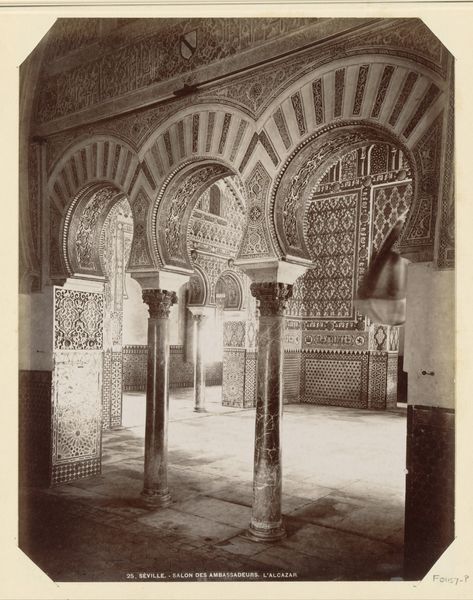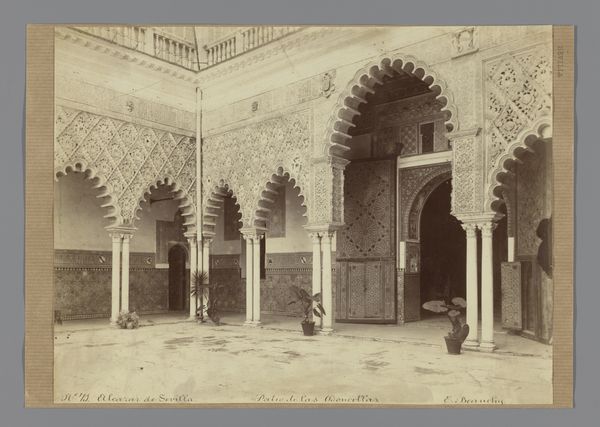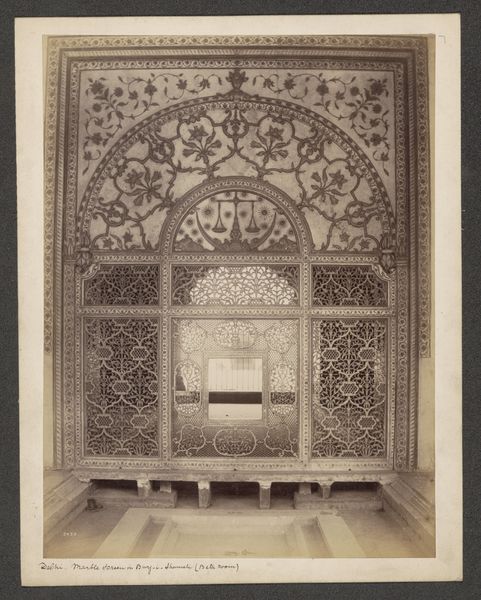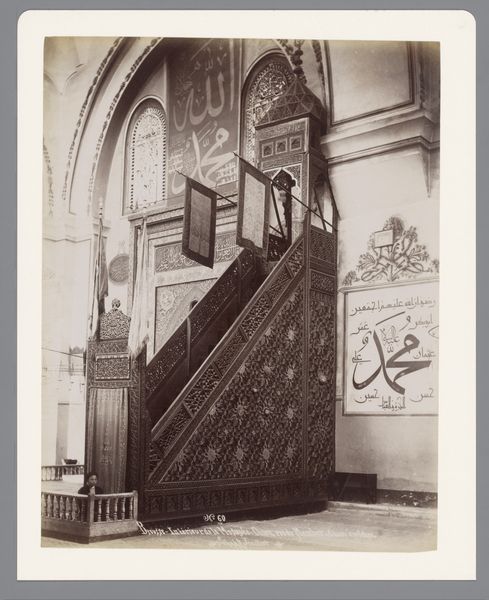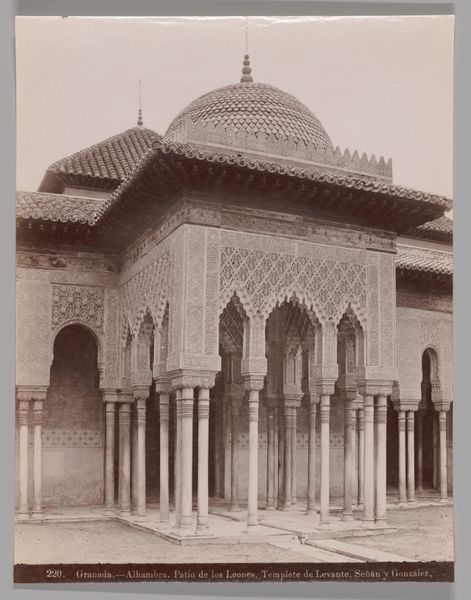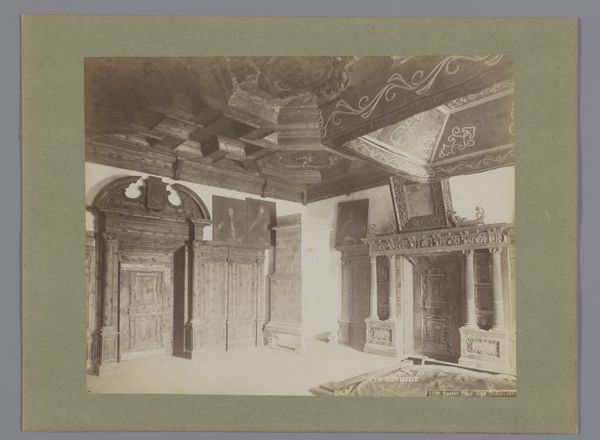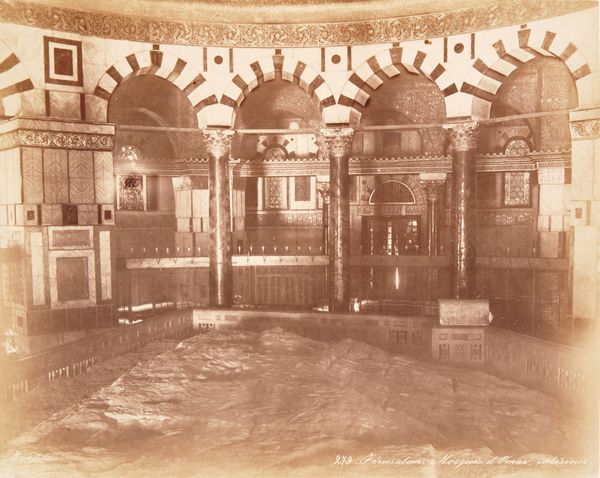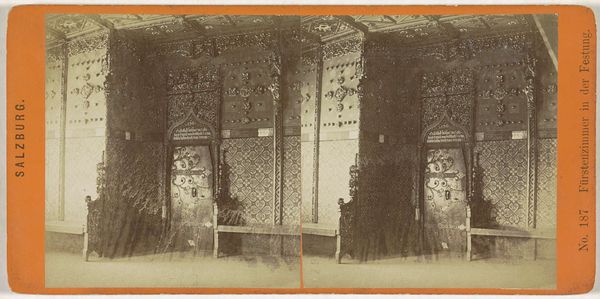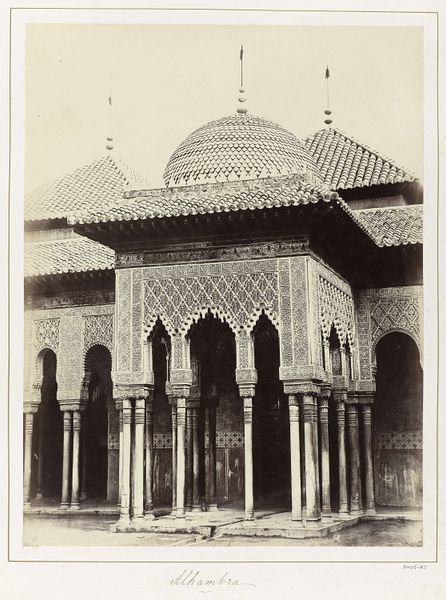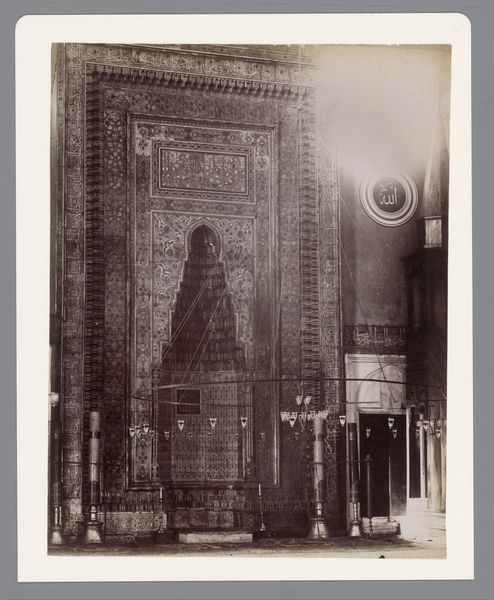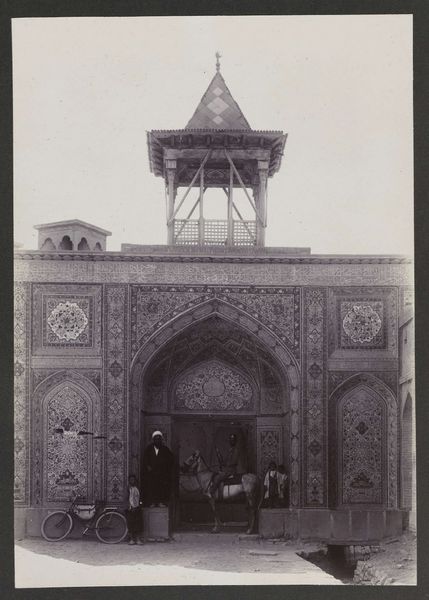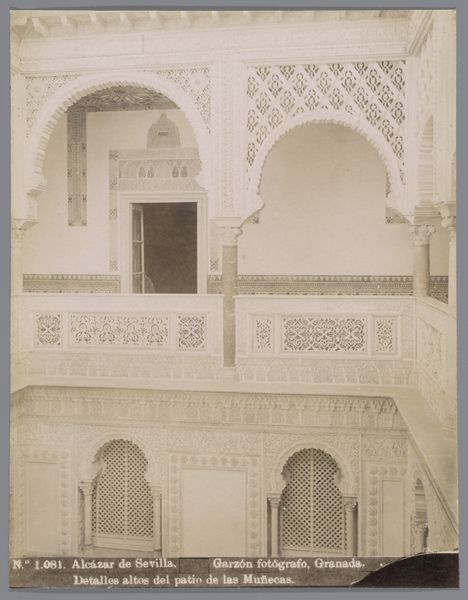
photography, gelatin-silver-print
#
portrait
#
muted colour palette
#
photography
#
geometric
#
orientalism
#
gelatin-silver-print
#
islamic-art
Dimensions: height 273 mm, width 208 mm
Copyright: Rijks Museum: Open Domain
Curator: Let’s consider this gelatin-silver print attributed to Neurdein Frères, capturing an interior view of the Dar El Bey in Tunis, some time between 1863 and 1900. Editor: The intricacy is remarkable! Despite the muted palette, the image feels rich, almost overwhelming. The geometric patterns draw my eye immediately. Curator: Absolutely. This photograph gives us a fascinating glimpse into the architecture and interior design of a significant Tunisian building. Think about the socio-political implications— the act of documenting this space and the power dynamics inherent in early photography of non-Western cultures. Editor: Precisely. It seems aligned with Orientalist tendencies. What kind of access would have been required to create this image? This room signifies power and luxury. Whose gaze are we adopting when we look at this image, and whose stories are omitted? Curator: Exactly my thoughts. The architecture, the placement of furniture—it all speaks to a certain hierarchy and privilege. Editor: I wonder about the role of photography itself during this period. Consider the burgeoning colonial influence at the time and the consumption of imagery that exoticized these spaces for European audiences. The composition frames the space in a way that almost romanticizes it. Curator: It also creates an idealized and probably staged vision of domestic life within the Bey’s palace. I believe we should consider how these photographs contribute to the construction of specific narratives of the Arab world. It’s not a neutral document but a cultural artefact imbued with colonial-era perceptions. Editor: Right. Beyond just its aesthetic appeal, we are tasked with acknowledging its entanglement with the social and political forces of the period and how they influence the interpretation of the art piece. Curator: Thank you. I found these considerations insightful to better understand not just what's depicted but the act of depicting itself. Editor: Yes, hopefully these nuances help us move beyond a simple appreciation of design toward a critical evaluation.
Comments
No comments
Be the first to comment and join the conversation on the ultimate creative platform.
